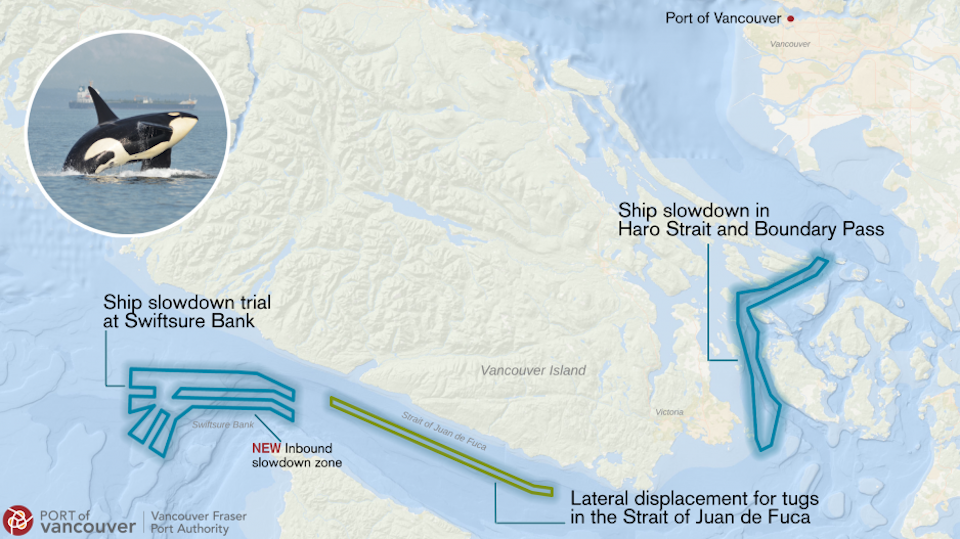The Vancouver Fraser Port Authority will expand this year its efforts to protect and aid the recovery of southern resident killer whales off the B.C. coast, official said this morning.
This is the sixth season where the port authority had led the implementation of the Enhancing Cetacean Habitat and Observation (ECHO) program, aimed at reducing underwater noise stemming from the port’s ship traffic.
This year, ECHO will cover 80 nautical miles of the Salish Sea and other waters – the largest area of coverage by the program since inception. The measures – which include asking vessels to slow down or keep distance from killer whales within ECHO zones – will run from June to November.
Coverage areas this year includes Swiftsure Bank (the newly expanded zone this year), Haro Strait, Boundary Pass and the Strait of Juan de Fuca. Officials say experts have identified Swiftsure Bank as a foraging area for southern resident killer whales, and the area overlaps with international shipping lanes used by commercial vessels to access Vancouver.
The expansion this year will add inbound shipping lanes at Swiftsure – one of the main entryways into Vancouver’s port – to ECHO measures. A separate federal program – Transport Canada’s Seasonal Slowdown Area – in the same zone also goes into effect this month.
The Swiftsure slowdown trial with ECHO was designed with First Nations consultation, with The Makah Tribe and the Pacheedaht First Nation acting as “key advisors” on the ECHO program, officials added.
Experts say underwater noise adversely impacts the ability for killer whales to hunt, navigate and communicate. Since 2017, officials said thousands of ships have slowed down in accordance with ECHO, reducing noise intensity underwater by up to 55% in some killer-whale foraging areas.



